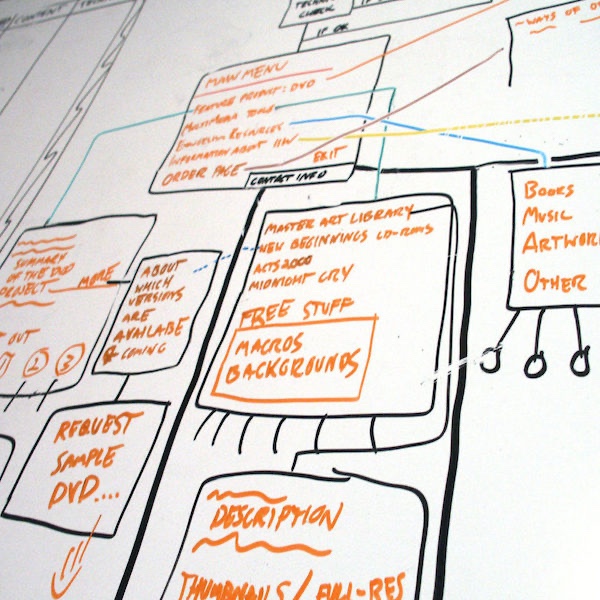As a business leader, you’re probably already aware of the importance of brainstorming but here are some things you need to know before your next session. First off, good job in appreciating the value of brainstorming. In today’s business world, change happens fast! And because new trends surface daily, you need to stay ahead of the curve by finding new ways to do business. New ideas, after all, have the enormous power of improving business, creating new products, and changing industries! This is especially true of UX design teams. That’s why brainstorming is an important part of any serious design process. But any company and any type of business can benefit from a good brainstorming session if it’s done right.
Why brainstorm?
The purpose of brainstorming is to come up with a truckload of ideas within a small amount of time. But according to Bob Sutton, Stanford professor, brainstorming is not a “standalone method that can be divorced from the broader creative process.” An authority on “design thinking,” he is co-founder of the “Stanford d.school,” which teaches and practices this concept. According to Sutton, brainstorming is a “segment of time when you amp up the generative part of your brain and turn down the evaluative part.” It’s meant to pull together and leverage the group’s collective thinking and can be used throughout the design process. So, whether you are planning empathy type work, doing product assessments or looking for a design solution, brainstorming can help.
Yet, there are those who assert that brainstorming is ineffective. But Sutton stands his ground saying they haven’t studied brainstorming adequately in organizations with those “who have developed brainstorming skills.” Instead, he points to Pixar and IDEO who actively practice brainstorming. He suggests opponents “start studying people and teams that routinely do real creative work in real organizations.”
A little bit of history.
So, who started this brainstorming thing anyway? You may be surprised to learn that brainstorming first appeared on the scene in the 1930s. The idea of “storming ideas” to creatively problem solve was introduced by Alex Osborne, partner of a leading advertising agency. In fact, his book, Applied Imagination, lays out the art and rules of brainstorming. His goal was to stimulate creative, business-savvy people to get together to improve or position products, name products, etc.
A great facilitator.
For the brainstorming session to be successful, you’ll need a skilled facilitator. Ideally, this person has experience. The facilitator should be someone who creates an environment that fosters a positive, open, dynamic, and productive engagement process. The energetic person who takes on this role should not be judgmental and encourage a constructive session. Their main goal is to generate as many ideas as possible during the session. And it’s important to note that the role of facilitator is not an authoritative one.
An amazing group.
Who are the best participants for an effective brainstorming session? Do they have to be industry savvy? Just pool together five to six of the brightest minds in your organization from all departments and levels. The more diverse the better. They can be designers, developers, managers or even an administrative assistant. These are the same people you chose to be a part of your company’s team. They are people who have a common vision yet different perspectives. And the best candidates will possess soft skills including being creative, having the ability to actively listen, and collaborate. They have an open mind and a shared goal.
Of course, your company culture needs to support the idea of brainstorming for it to be successful. If participants are afraid to speak up and contribute, the process won’t work and will be a waste of time. Troublesome team members might be those who feel superior based on their company roles or position. If they can’t make others feel comfortable in expressing their views, leave them out of the process.
Avoid these “idea killers”
According to USA Today article, Attack of the Idea Killers, every organization has its share of idea killers. You’ll want to leave these strong personalities and big egos out of your session for best results. The following is a list of the personality types that are best left out of the brainstorming process. Keep an eye out for them.
Avoid “Attention Vampires” who want to be the center of attention. They dominate conversations and suck the life out of other members. “Wet Blankets” are the pessimists who see the worst in ideas that are not their own. They are “discouraging and depressing” and most of their own comments are without merit. “Idea Assassins” are known to kill everyone’s ideas while appearing to give constructive criticism. “Dictators” are those who “love every idea–as long as it is theirs.” Many times, a manager may unknowingly become a dictator, shooting down all other ideas and those that don’t conform to their own. “Obstructionists” tend to make conversations and procedures complicated. They bring sessions to a “dead end” by derailing the groups flow by bringing up irrelevant facts or considerations. “Social Loafers” show up but rarely participate in generating meaningful ideas. They usually just sit back and “let others do the heavy lifting.”
Motivating the group.
Okay, now that you’ve got the right individuals together. It’s time to inspire and move the group in the right direction. Time to get the group on the path of bigger ideas and real solutions. Start with the right preparations. Set up the session in a well lit and comfortable space. Sutton recommends finding a room “with lots of vertical work space” and suggests that all participants are standing. If appropriate, go somewhere different and unfamiliar.
And don’t forget to feed the brainstorming group! Who can think on an empty stomach? Have a meal or snack prepared in advance of the session. And make sure to set a reasonable time to meet. You may also think about avoiding stressful times of the year when everyone is overloaded with assignments. More importantly, be sure to create a welcoming environment. But leave behind all distractions like phones, laptops, tablets, etc. It’s important that each person feels they have the attention they deserve as participants.
Know the rules.
But before you can win at anything, you need to know the rules. And you can find lots of different rules out there on brainstorming. But there are a few that are commonly suggested by experts and are key to successful brainstorming. The first one is not to place judgement on any of the ideas that surface in a session. This really is a no-brainer and should be obvious. Criticizing someone’s idea is the fastest way to get individuals to hold back for fear of being ridiculed or rejected. The last thing you want to do is shut down the idea creation process. If you want to get the most out of the process, keep opinions out of it.
Other widely recognized rules are to encourage lots of ideas, and that it doesn’t matter how crazy they might seem. Because the more ideas that flow, the more likely other ideas will follow. This leads to building on the ideas of others making it an important rule that keeps ideas flowing freely. Another key rule is to be visual to bring ideas out in the open for all to see. Write it down, draw a picture, put it on a post-it! Being visual helps in organizing ideas by goals, likeness, etc. And as brainstorming can be just as it sounds, stormy, it’s important to stay focused. Staying on task and within the scope of the design solution will keep the group on track and bring results.
Supplies for participants.
It’s important to be prepared before each session. Provide a whiteboard, sticky notes, paper, timer, and markers or felt pens. Before the sessions begins, write down each goal on the whiteboard allowing enough space around each one. The goal might be a problem to solve, new idea generator, product or process improvement concept. Provide each person in the group with one of the markers or felt pen, pad of sticky notes, and a pad of paper. You’ll need to keep time for each goal discussed so have the timer handy to stay on track.
Let the fun begin!
Remember, when it comes to ideas, the sky’s the limit! Even the craziest of ideas can lead to a realistic one. Start by going through the goals on the board with the group. The facilitator should write a compelling question to get things started. Set the timer and have the group write down any idea that comes to mind. Have them use one sticky note per idea. When finished, collect all the sticky notes and sort them by goal. Be sure to put similar ideas next to each other. Read each one to the group and ask the writer to explain if necessary.
Set the timer for 5 minutes and tell the group to choose an idea from the board for each goal and sketch it on a piece of paper. Then hang the sketches on the board and have the group discuss each one. At the end of the session, you should come out with one or many solutions for each problem/goal.
Select winning ideas.
So, you’ve finished the session and now it’s time to select some of the best ideas. If you’re selecting a design solution, the selection process may not be as straightforward and may need more discussion by the group. Pick out more than one idea, which present a range of possibilities. Try not to narrow ideas too quickly in the process. Instead, try to include the group’s scope of solutions that will move into the prototyping phase.
Tips from the expert.
Sutton recommends not limiting the brainstorming session to just conjuring up brand new ideas. You should consider using the brainstorm session to “combine and extend ideas.” And you may also consider adding individual brainstorming both before and after the group session. Before the session, consider allowing individuals in the group time to think quietly to generate some of their best thoughts. This helps them think of unique concepts before the noise and influence of others take over.
Plus, be sure to separate the sessions from other work processes. Brainstorming has its own unique purpose and should not be part of another procedure or work practice. To get the most out of the brainstorming session, it needs to be structured and conducted within set constraints. Be prepared and confident that the process is a vital part of the company’s way of generating viable ideas. But most importantly, don’t forget to follow the rules.
Find better solutions.
Some of the best ideas can come from a successful brainstorming session. If done right, it can generate a wealth of new and fresh ideas. The beauty of it is that the process comes from different perspectives that can only be possible with a group of diverse participants. And as one 30-year veteran to the brainstorming process, Bill Donius, reminds us, if your company is not thinking about new and better ways of doing things, “someone else is guaranteed to be doing just that.”
At Bitbean, we go beyond brainstorming. Our Shifting Perspectives approach is a relentless search for the truth that comes from years of experience. Our team of experts will stop at nothing to uncover solutions to make companies more efficient and profitable. Find out how our unique method can help your company succeed with effective custom software solutions. Contact us today.







